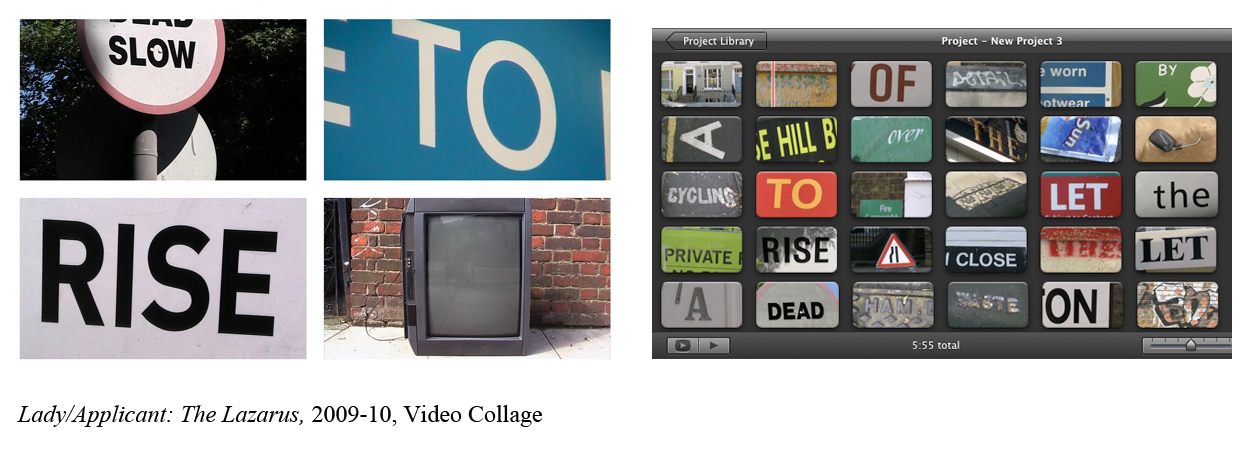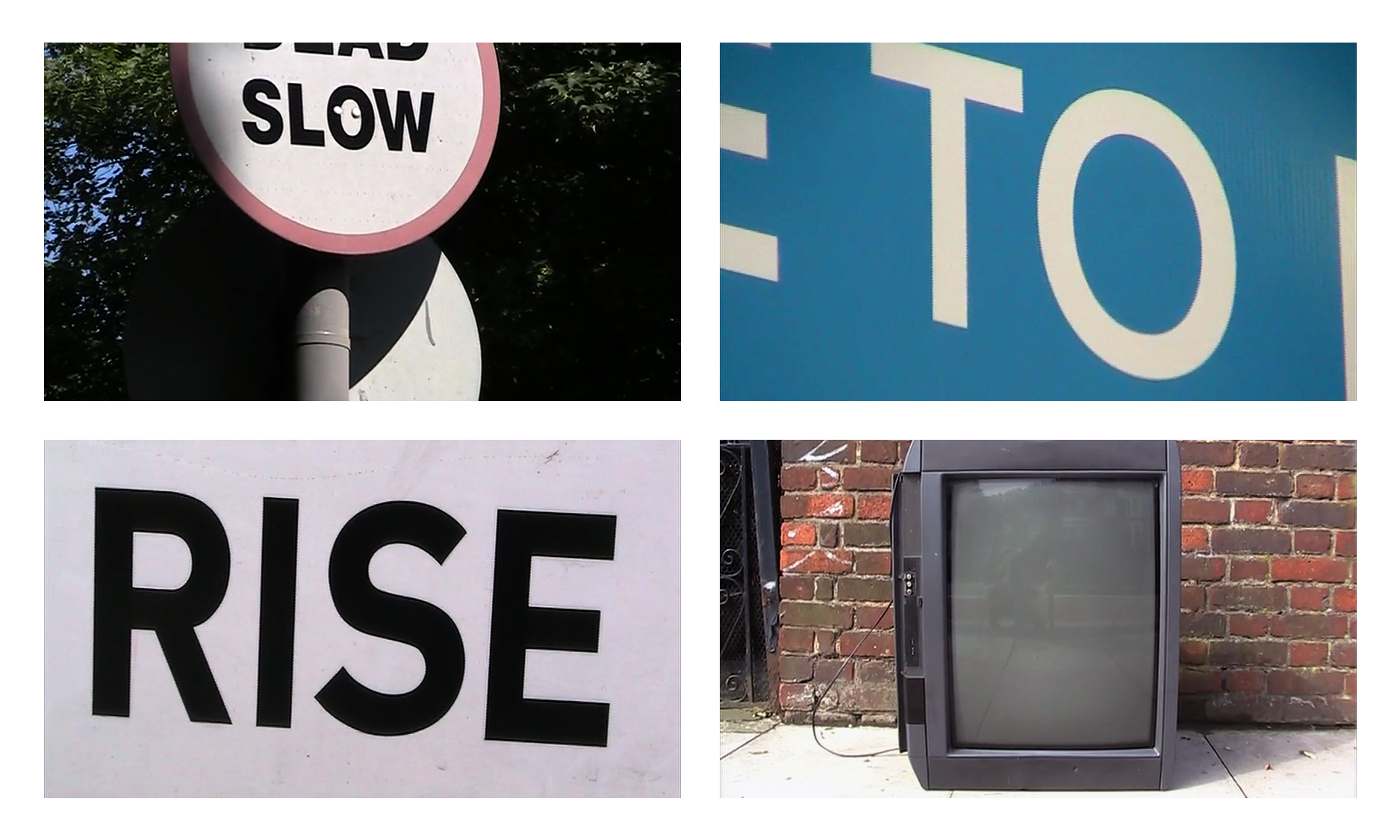Lady/Applicant: The Lazarus is a multimedia installation and experiment in new media poetics that strategically re-imagines authorial identities.
Chris Girard describes the audio and video poems from the installation, 2010
These identities are particularly those from street signs and audio clips of renowned confessional poet Sylvia Plath. By presenting collaged audio and video recordings, the project radically questions the power traditionally associated with the author. Since Plath’s suicide almost 50 years ago, she continues to be cast as a depressed wife and mother. The imperatives of this role still weigh heavy upon the production of her biography and the reception of her work.
The collaging of audio and video clips reembodies Plath as an omnipresent ghost and shifts meaning away from an exclusive association with the tragically depressed, the pathologized Plath. But, instead of disembodying the writing entirely away from the author, the author now wavers productively between Plath, reader/viewer and myself. The act of shifting references away from the author’s life and intention enables the writing to become more open to alternate interpretation, more open to this new historical moment and audience.
Print Versions
The collaged audio and video poems can be experienced through watching and listening to them. Printable PDF versions of the audio and video poems can be found here for audio and here for video.
Lady/Applicant: The Lazarus, 2010, Audio Collage
Installation Details
The installation consists of audio and video collages that are created through the cutting and rearranging of prerecorded audio and video recordings of texts into sequences of connected texts that play new poems.
The audio component was collaged from the poems that Sylvia Plath read in the early 1960s entitled Lady Lazarus and The Applicant to form a new hybrid poem entitled Lady/Applicant: The Lazarus.
Lady/Applicant: The Lazarus, 2010, Video Collage
The video component was a series of video collages of texts documented near the location where Plath committed suicide in Camden, London. The installation explores how meaning shifts from the intended authors recorded on the audio, video and images to myself through the process of collaging and recording the installation objects.
Theory Alert…
While the project primarily touches on issues of authorship, embodiment and performativity, discourse surrounding digital and new media poetics shows the effect it has on the reader too. It shows how the attribution of an author by the reader becomes complicated from the instability and constantly changing state of screen-based interfaces like that of the project.
For example… Plath, an American who lived in England for only a few years, oddly spoke with a fake English accent during these readings. It suggests a construction of identity to place. The audio presents a phonetic collage of Plath’s voice from BBC recordings of her poems Lady Lazarus and The Applicant during her stay in London and a few years before her death in 1963. The fragments of audio are sliced, extracted and rearranged from individual words of her readings to produce a seamless collage of poetry.
In theoretical terms, the project explores ‘performativity’ of the ‘author function’. The ‘author function’ is a term coined by poststructural theorist Michel Foucault to describe how readers attribute certain characteristics that they believe belong to the author and ascribe them to the writing.
‘Performativity’ is a term used by philosopher Judith Butler to describe a set of actions that ascribe and predetermine a set of attributes to a subject through his or her gender, age, timeframe, nationality and race.
The performativity of the author function appropriates these characteristics of an identity and attributes the characteristics to the author. For a much longer explanation, please see Ph.D. thesis here.
Installation Process & Behind-The-Scenes…

This image shows the process of collaging words from Sylvia Plath’s Lady Lazarus and The Applicant (bottom tracks) with SoundTrack Pro to form a new hybrid poem Lady/Applicant: The Lazarus (top track).

A poem was created based on street and storefront signs found near Plath’s former residence and place of death in Camden, London. These clips were weaved together on iMovie and inspired by experimental filmmaker Hollis Frampton’s film entitled Zorns Lemma. They are composed of texts arranged in a semiotic sequence that are subservient to their visual surroundings. The cadence of sound and the sequence of visual texts from instructional and public signs filmed within a five block perimeter of 23 Fitzroy Road reflect the constraint and play of a historical moment.

The plaque images show a transformation of a historical moment to an instruction. William Butler Yeats lived in the same townhouse that Plath committed suicide in about 25 years before. Though both are noted figures, only the plaque of Yeats is shown in front of 23 Fitzroy Road. This component was included in the installation as 4×6 matte photos scattered on the floor.




